The Best Nearfield Studio Monitors Under $2,000 Each
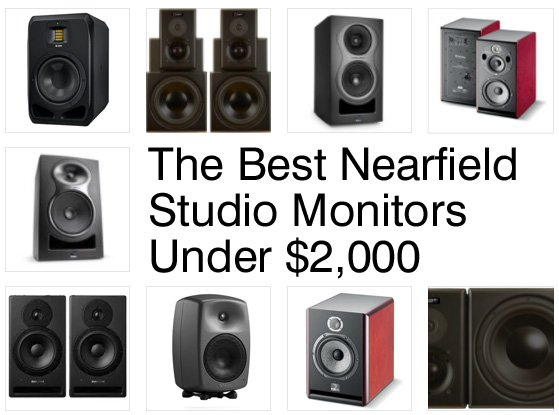 Why Quality Studio Monitors Are Important
Why Quality Studio Monitors Are Important
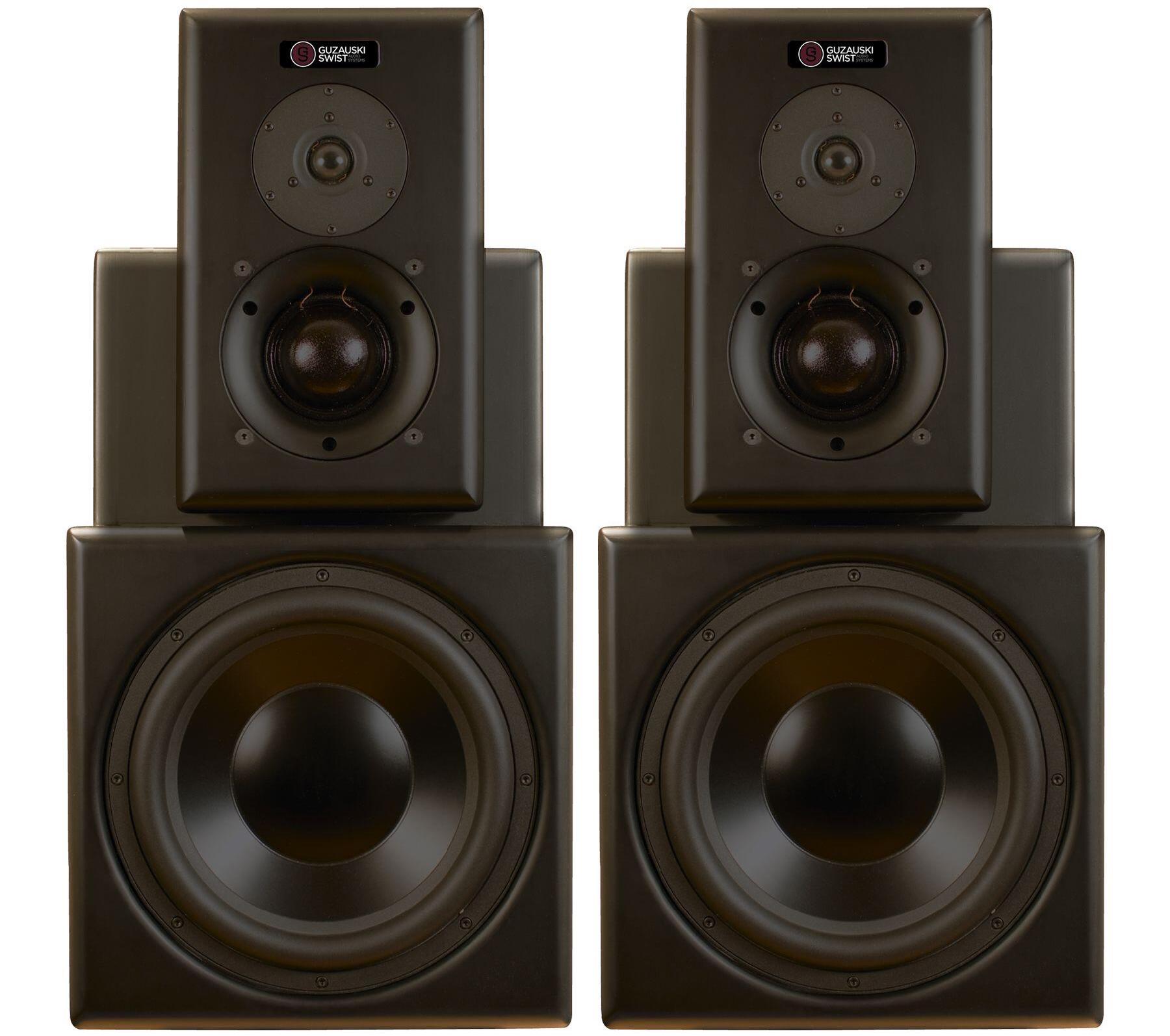
High-end midfield monitors, like these by Guzauski-Swist, can come with a hefty price tag. Fortunately, the speakers below fit into far more budgets.
Buy it new on Sweetwater, B&H, Thomann, or Amazon. Look for deals on Reverb.
At the front-end of the signal chain is the musician and their instrument. And at the back-end is the engineer and their primary instrument: their monitors.
Of course, great monitoring involves more than just the speakers themselves. A pair of monitors on its own is nothing but a collection of materials and circuits, just like a musical instrument is usually nothing but a combination of wood, metal, or plastics.
The room environment and the engineer’s ears, combined with taste and musicianship all contribute to how well any set of studio monitors are deployed.
Defining “Near Field” Monitors
With those caveats out of the way, today we are focusing on ultra-traditional 2-way monitors with 6.5″ to 7″ woofers, much like the legendary Yamaha NS10.
The flood of companies, designs, and design philosophy alive in the monitor marketplace today has made it harder than ever to decide on the right pair. There is also a flood of non-traditional monitor designs as well, including from my own family brand—Guzauski-Swist Audio Systems—designed by my late father, Larry Swist, and the acclaimed mixing engineer Mick Guzauski.
Dave Pensado once asked Mick Guzauski, “The world doesn’t need any more monitors. Why do yours have a reason to exist?” It’s a good question, and the truth of the matter is that Mick and Larry just couldn’t help themselves from delving into a “science project” that offered yet another musical choice on speaker design for critical monitoring.
My own association with the Guzauski-Swist brand is not a conflict of interests in this case, since our products do not directly compete with any of these 2-way monitors. In fact, all of these options are excellent nearfield complements to the more midfield nature of the Guzauski-Swist product line.
Even studios that already have large, super-high-end monitors can benefit from smaller and relatively less expensive nearfields. And for many studios without high end monitoring, nearfields in the sub-$2000 range are a great first step in that direction.
The Best Nearfield Studio Monitors Under $2,000 Each
This collection features some of the best 2-ways under $2,000 each that we could find. For some, spending up to $2,000 per speaker could seem like a challenging price point, but for audio professionals and aspiring professionals, it shouldn’t be. Your instrument is an extension of your musicianship and worthy of detailed research, development, and investment.
Now, let’s look at some of the top nearfield options on the market today.
Genelec 8340A ($1,700 each)
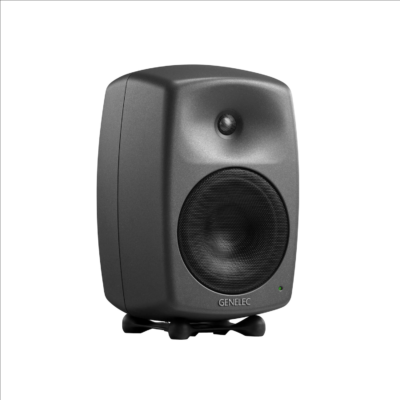
The 8340A integrates closely with the GLM software, which allows precise calibration for your listening environment.
Buy it new on Sweetwater, B&H, Thomann, or Amazon. Look for deals on Reverb.
The Genelec 8340A is packed with the company’s proprietary Smart Active Monitor (SAM) innovation and is the least “traditional” 2-way in this set.
Class D power drives 150 watts to a 3/4″ metal dome tweeter, and another 150 watts to a 6 ½” cone woofer, which results in 110 dB of SPL (38 Hz – 22 kHz) in a 19-pound unit.
Some other exclusive Genelec technology includes their active crossover design that allows each driver territorial signal processing for the considerable adjustments that can be made. More detailed calibrations take place through the GLM Kit, which is an additional $300. The kit includes a network adapter, microphone, and software to measure your room and make signal adjustments directly inside the 8340A. More on that in a minute.
My pair of monitors arrived in an excellent fitted Peli Case 41 (not included) and highlight how Genelec has engineered this line for transport and field work. Out of the flight case, the metallic oblique speaker looks tough, modern, slick, and presents a number of well-thought features. The Iso-Pod rubber stand drops on any surface and eliminates the need to hunt for a mounting scenario of round pads or rubber pieces. This neat accessory also allows for tilting and superior vibration dampening in any location.
There are AES digital inputs and throughs in addition to the standard analog in. Also, there are 2 Ethernet ports to chain the GLM system, if applicable. A super nice touch is having the power and XLR inputs facing down, which allow the speaker to house in a tight space. Sometimes it’s unavoidable to have the speaker right on the window, wall, or side of a van while on location. Additionally, there is a generous row of manual switches that can roll off bass, account for desktop placement, and tilt bass and treble response.
Before any GLM adjustments, the 8340As sound good, maybe a little too good, as is a common knock on the Genelec line. There was a small amount of port distortion coming from the rear bass reflex port (the highest of this roundup). I had to confirm this with a REW Room EQ Wizard measurement. To be fair, bass reflex is a part of monitor design at this price point. But as you will see later, there are ways around that, notably with more wattage and less reflex. That being said, the sonic quality is thoroughly rich and enjoyable to work with.
The GLM system lines up with the rest of cutting edge innovation in this set (again this raises your price to $2,000). This add-on is well worth it if you are on-location or in inferior listening environments. The GLM adapter plugs into the computer’s USB port and gives unprecedented feedback and control over monitoring. A quick sweep test into the GLM mic and the version 4 software corrects any stereo, surround, and subwoofer integration. You can also store the calibration in the speaker directly, so you don’t need the GLM system active and can just enable calibration directly on the monitor.
The calibrated result is certainly more enticing and desirable. Instrumental clarity increases and lead vocals or voiceovers sit nicely in this room-corrected wider sweet spot. For educational or broadcast markets, it’s hard to argue with this transferable ability. The sound result is why so many broadcasters and media professionals trust Genelec with their workflow. If you are in a treated control room, you can probably do without the GLM and tweak manually with the generous “on speaker” frequency and gain controls.
My baseline to get tasting notes on this roundup were some commercial mixes (less limiting) at a 96 kHz sample rate. I put an SSL X-Rack XR635 EQ module in the chain to taste adds and cuts at the low end, canyon zones, presence points, and high air. Sonically, the 8340A aligns with the Genelec pedigree as a reliable and pleasing workhorse that would be a standard power tool in any professional’s collection. The ability to quickly install and tweak these monitors to sound great, in any challenging environment, is a huge selling point.
Focal Solo6 Be ($1,500 each)
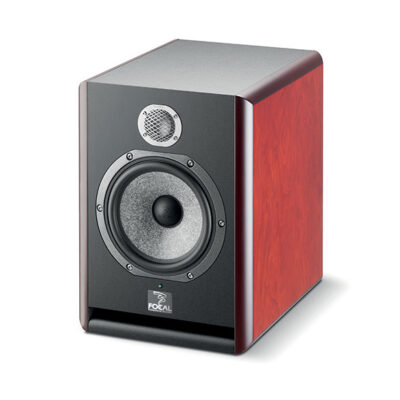
“Focal’s Solo6 Be professional monitoring loudspeaker is the most compact in the SM6 line.”
Buy it new on Sweetwater, B&H, Thomann, or Amazon. Look for deals on Reverb.
The Focal Solo6 Be would seem to be a straight up 2-way powered monitor in a gorgeous case, yet there is a lot going on inside.
Expect the unexpected. With everyone going to Class D amplification, Focal has returned to Class AB power with Class D efficiency in their BASH Technology, which pursues an efficient hybrid of both. The BASH (Class AB/Class D) drives 150 watts to a 6 ½” Sandwich Composite Woofer, then a pure Class AB 100 watts to a beryllium inverted dome tweeter, which results in 113 dB of SPL (40 Hz – 40 kHz) in a 24-pound unit.
Much of Focal’s soft airy sound character is contained in the tweeter design. Again, there is a lot going on here—starting with the use of an inverted dome that makes the highs not as direct.
The use of beryllium (which is seven times more rigid than aluminum) allows for faster sound waves with less distortion, and extends the frequency range all the way up to 40 kHz.
There is an occupational hazard when working with beryllium, and I don’t mean tinnitus. Beryllium is moderately flammable, and can be toxic when damaged or inflamed. Focal puts a protective grill over the inverted dome, a unique feature in this set. We are used to being careful around tweeters, but this requires a whole new level of precaution.
Out of the box, the Solo6 Be is stunning—a work of French art that inspires one to see what happens next. Personal aesthetics will play a big decision here, along with the sound quality. The elegant 2-tone feel of the black case with wine-colored side panels really stand out and contrast this unit from the rest.
There is minimal connectivity on the rear. A nice versatile option in installation is to switch from 115V or 220V. There is a HF contour to +/- 3dB above 5 kHz and a low frequency (LF) contour to +/- 6dB below 150 Hz. No digital inputs, DSP, or special frills on this model, just classic 2-way connectivity.
I appreciated a true power switch at the traditional location next to the power cable. It’s easy to find when reaching in tight spaces, and it seems more and more manufacturers are moving their power switches (or buttons), away from their expected location.
The green lights up and you are facing a very pleasing look, if you like multi-tone and texture. The composite woofer stands out pleasingly in a sparkled mounting ring. Again, very artistic, and a welcome departure from all-black or all-black with a white woofer. The profile is compact but professional.
So with all the design hype on the tweeter, you can’t help but focus on the top end. And it is amazing. All of that aforementioned design to make the tweeters less directional is very apparent. You can move around your room and not hear them as 8 kHz laser beams tweeting into your eardrum.
I double-checked with a sine wave generator and was pleasantly surprised by how soft yet honest the top end is. One wonders if there is a bit of diffusion coming from the tweeter grill as well. The grill on the inverted tweeter is there to protect the beryllium, but also may be slightly diffusing the short waves.
Utilizing the SSL EQ brought some encouraging results. Presence points were able to be smoothly boosted without the shrill ear buzzing you can get at 3-4 kHz in some designs. And then giving everything a top shelf air produced the desired effect with little phasing issues and great stereo imaging.
This probably isn’t the article to get into the benefits of Focal’s 40 kHz output and if our ears can actually hear those extreme upper partials. Being a drummer, and having heard many a hi-hat mangled in the digital domain, I would say yes. There seems to be some voodoo or mojo in having a frequency capability well beyond our perceived hearing range.
The bottom end is serviceable and rhythmically tight. The Solo6 Be delivers an impressive amount of critical bass for its compact size and moderate power. There is a some reflex distortion around 70 Hz, though not as much as the Genelec 8340A, but it is definitely present as the unavoidable side effect of a bass reflex design.
Of course, you could eliminate any port distortion by adding the integrated Focal Sub6 (ideally 2) to your setup. This could apply to the Genelec or any monitor in this roundup. A jump to a stereo subwoofer system would be a common upgrade and flatten your monitor frequency response down to 20 Hz.
This monitor is simply striking in both appearance and sound. Out of the box, with no DSP, the sound is absolutely pristine and the top end is like nothing on the market. This elegant hybrid of the past and the future will serve well as a trusted collaborator for any artist.
Dynaudio Core 7 ($2,000 each)
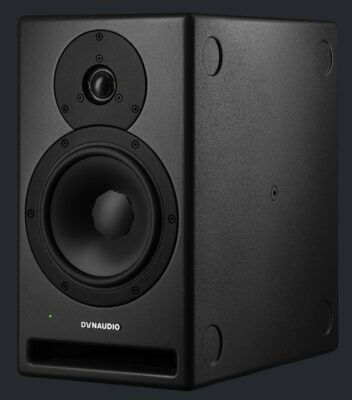
“Core 7s are the most honest, uncolored, and neutral in this lineup.”
Buy it new on Sweetwater, B&H, Thomann, or Amazon. Look for deals on Reverb.
Designed to work across all genres with built-in versatility, the Dynaudio Core 7 is another workhorse loaded with DSP options and philosophy.
We are back to Class D amplification here, but there is a lot of it: 500 watts to a 7″ woofer and another 150 watts to a Esotar Pro tweeter that builds on Dynaudio’s legacy of soft dome innovation.
The result is 112dB of SPL, a 38 Hz – 31 kHz frequency range, all in a 32-pound unit.
The Core 7 designers seem to be anticipating multiple applications and scenarios. This is the most compact flagship grade unit in Dynaudio’s lineup. There is a highly developed yet easy to use DSP system derived from Dynaudio’s 15-plus years of incorporating effective on-board monitoring DSP. This has led to the presentation of multiple DSP options to tweak the Core 7 into any scenario, from your room placement to the dynamic range of your bit depth. Somewhat like Genelec, Dynaudio is developing monitors that can move around with ease and gain the trust of the engineers that rely on them.
Out of the box, this one is the tallest, the biggest and the heaviest of the bunch, with the most heat sinks, the most buttons and input options, and the most power. Opening up these speakers, I thought to myself “well, if I can’t find a room or application for this, maybe I need to re-evaluate my life.”
Look at the front you’re confronted with no-frills 2-way face, and the “extra” half inch of the 7″ woofer, made from magnesium silicate polymer. (A Dynaudio exclusive material to tighten low end).
A look at the back and you’re presented with analog and AES inputs, with a word clock input as well. The word clock option is very appealing as you can lock the internal DSP of Core 7 directly into your interface or A/D converter. Talk about solving some translation problems.
There is an array of DSP selection switches here, but it’s simplified into easy to understand language in most cases: Bass extension (high-pass), digital channel (right/left), sound balance (bright/neutral/dark), position (anechoic, desk, soffit), position, (free, wall, corner), input sensitivity (0, +4, +16, +24 dBu), SPL (112, 100, 96, 88 dB).
The “anechoic” position would be appropriate for the majority of placements on stands in treated rooms, or anything that is not in a soffit or on the desk. But aside from that, the language on the suite of DSP options makes setup quick and confident, we know some environment tuning has already occurred in the DSP.
Using the analog input, I set the switches appropriately for “desk” and “wall” and used “+24dB” sensitivity from my SSL console at “112dB SPL” to run best at 24-bit. With these settings in place, the Core 7s sounded balanced and phenomenal on start up. Everything seemed right where it should be. The “neutral” sound balance works perfectly and was comparable to my Guzauski-Swist GS3As (already balanced to be neutral in my treated control room). To be fair, both systems use a similar 1″ soft dome tweeter design, however the ultra-transparent neutral character of the Core 7 stood out from the pack.
Part of this engineering success is, like the GS3A, the Core 7s are over-powered (this is a good thing). Extra watts solve a lot of problems—for example, bass reflex distortion. Even though there is a small reflex port on the Core 7, there is no audible distortion, and REW confirmed this through a quick room measurement. With other monitors in this class, you get a sense they are clean but right on the edge of needing more juice or reflex. The Core 7 effortlessly gives you power, and clarity, with a confident feeling there is plenty more in reserve. Combined with efficiency of AES and word clock input, this is a real heavy consideration.
Dynaudio’s goal is to deliver nothing but the truth, and to that end, the Core 7s are the most honest, uncolored, and neutral in this lineup. Yet, with the cleverly designed DSP switches, you have the option to add just a squirt of coloration (bright or dark). With that versatility and reliability, any recording, mixing or mastering studio would be well served by the Core 7’s capability.
ADAM Audio S2V ($1,750 each)
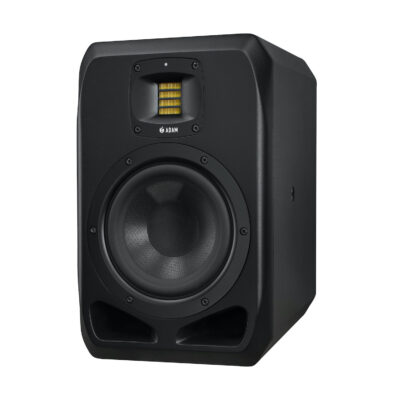
“The S2V’s compact dimensions belie its impressive power.”
Buy it new on Sweetwater, B&H, Thomann, or Amazon. Look for deals on Reverb.
Each offering so far has had a unique design and sonic character. This next pair will call out to that special engineer who will cherish their monitors like a Stradivarius.
We end in Germany with Adam Audio. Though this isn’t exactly rocket science, it sure feels like it. The Adam S2V uses 300 class D watts to a 7″ hexacone woofer, 50 class AB watts to Adam’s signature S-ART ribbon tweeter, with a result of 120 dB of SPL (35 Hz – 50 kHz) in a 24-pound unit.
Like Focal, Adam is using Class AB amplification to take some “digital” out of the top end, which is much appreciated by cymbals and transients. This amp needs a mere 50 watts to drive the latest in Adam’s 20-plus year development of ribbon tweeter technology.
The S-ART Tweeter is enhanced by a more recent innovation called the HPS Waveguide, which helps imaging and widening of the sweet spot (a common design goal on all these models).
The bottom end is like Dynaudio’s in that it is generously powered (300 W). Here is also the most advanced bass reflex design of this set. The entire S Series reflex ports have been redesigned to control resonance and avoid unwanted coloration (or “port distortion”).
Out of the box, the S2V is a most impressive unpacking experience. German efficiency and elegance are on high display (literally) as you page through the high-quality S Series historical literature. I was reminded somewhat of Universal Audio’s unpacking experience, as both companies are clearly proud of their heritage, as well as their future.
The heritage of Adam Audio is front and center when you see that distinct yellow ribbon tweeter on the S2V. It’s a testament to every design in this round up that each monitor has a completely unique (and functional) look. The honeycomb bass driver, designed to disperse heat, compliments the overall feel of a well-crafted musical instrument.
Turning the unit around, the first thing you notice is a LCD display attached to a dual-function rotary “encoder” knob. The onboard DSP of the S2V is somewhere between the simplified (yet effective) Dynaudio DSP and the extensive Genelec GLM room measuring incarnation.
The “high performance” onboard S2V DSP module allows you to make adjustments, optimizations, AES digital connections, and even has an expansion “future proof” port. The DSP options can also be controlled by computer with Series S software (somewhat like the Genelec system). Unlike the Genelec GLM system, the powerful DSP functions are available directly on this S2V interface, without requiring any software.
Since the S2V has no simple switches or rotary options, one has to look at the DSP screen at start up. Adam offers two factory preset voicings in addition to three user-selected voicings.
The first preset is a PURE setting, which is the most accurate “flat as can be” factory tuned response. There is also a DNR (Dynamic Natural Response) preset that has been developed to add a little bit of “hype.” You also have to access your volume, AES, and delay settings through this knob. It requires a little bit of button practice to distinguish between the quick push and the long push to navigate through this DSP with the “one knob” system.
If you are not used to a ribbon tweeter, there is a notable break-in period for your ears. The S Series are “burned in” at the factory, so no worries there. I’m talking about a listening adjustment if you are moving from a conventional tweeter.
The top end is both accurate and smooth, definitely of a different character than the other speakers here, perhaps slightly “softer” and gentler in the top end, and potentially less fatiguing. There is some consensus among those who make the switch to Adam about this transition. After that, you are good to go, and probably fast becoming one of the many growing Adam loyalists.
The reduction of listening fatigue at the S2V’s top end can really be a major factor in choosing them. I pushed the SSL 3-4 kHz presence points pretty hard and yet my ears didn’t complain and feel ransacked by sibilant brain patterns. Nothing is sharp or super directional. The high air occupies a wide sweet spot and translates around the room well. The S2Vs also give you a lot of information if you are tuning reverbs and dialing in high reflections.
The quickness and wide transparency of the ART ribbon tweeter is complemented by an equally well-designed low end. Like Dynaudio, there is no reflex or port distortion here. The S Series bass reflex systems have been completely designed to control the resonances and vibration and 300 watts also solves a lot of issues. The woofers dispatch any signal with plenty left in the tank, even boosting 180 Hz gives you clear unbiased information. All of this technology has also addressed any fatigue issues at the low end.
After a long non-fatiguing mix you can switch the DSP to the slightly “hyped” DNR preset, and turn up the volume for some client-pleasing. The S2V has plenty in the tank. And as mentioned, you can develop your own voicing and do small room corrections with the additional user presets. The S2V is just a superb instrument, engineered to make music.
Final Thougths
Adam Audio’s YouTube channel has a useful comparison of $250 monitors versus $1750. What should you be budgeting for and what is your priority?
It’s been said before and it will be said again, that after your musician, your recordings are only as good as your instrument. A $500 drum set is serviceable and, tuned right, can be applied to a number of creative contexts. However, a $3,500 drum set is going to have that enhanced detail, those final design elements, and materials that bring something from the great to the ethereal.
Computers, plug-ins, and interfaces come and go, but professional-grade monitors are built to last. You may discover that buying monitor after monitor on the low end will have you chasing something that already exists on the high end.
All of these models have personality, and they’re ready to call out to the artist with like-minded sensibilities. Working with these long-term will make your job and creations so much more enjoyable. The research and development teams have hit all the right marks, and built upon the successful heritage of each manufacturer.
It should be noted that Focal and Dynaudio have robust consumer and home speaker divisions, while Genelec and Adam focus on pure pro audio. Every company has struck a commendable balance between tradition, creativity, and innovation. Recording studio design used to use a significant amount of voodoo as opposed to pure measurement and analysis. The same could be said for old school monitors, certainly the Yamaha NS10s had a voodoo no one still understands. And each model here has an “intangible” as well.
Today, more and more in audio, the analytics have taken over (just like in baseball). There is less whimsy and more computers and robots. The new trap of mixing (or designing) with your eyes is a real concern for all aspects of audio production. However, these monitoring gems have clearly been fostered in that delicate sonic hybrid of musicianship and math. And you can feel the pride of the designers who developed them.
In an attempt to use a single word for each monitor, I would say the Genelec 8340As are adaptable, the Focal Solo6 Bes are artistic, the Dynaudio Core 7s are honest, and the Adam Audio S2Vs are modern. Of course, those words apply to all in some degree. If DSP is a factor in your decision, the ramp is from Focal (no DSP) to Dynaudio (simple yet effective DSP) to Adam (comprehensive DSP) to Genelec (room correcting DSP with measuring mic).
Which of these instruments is calling out to you? Which one will become your prized musical instrument?
Please note: When you buy products through links on this page, we may earn an affiliate commission.






